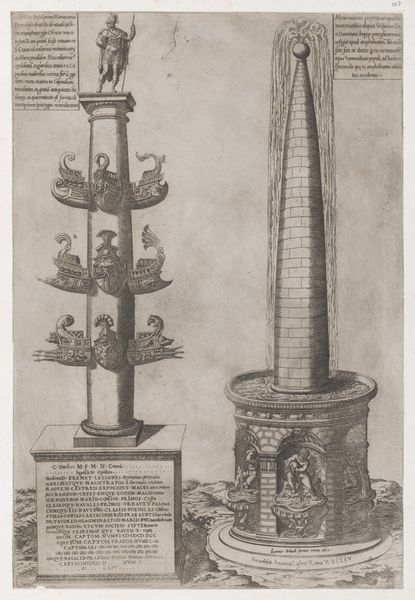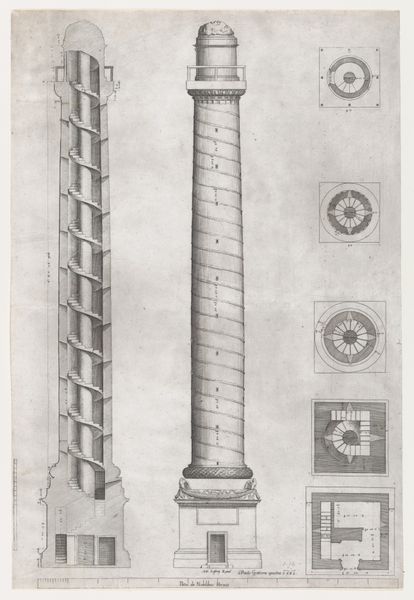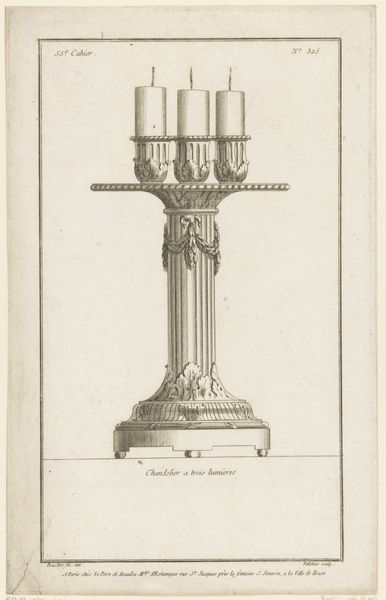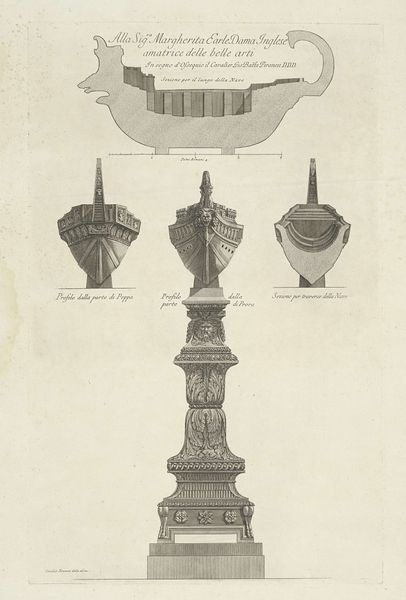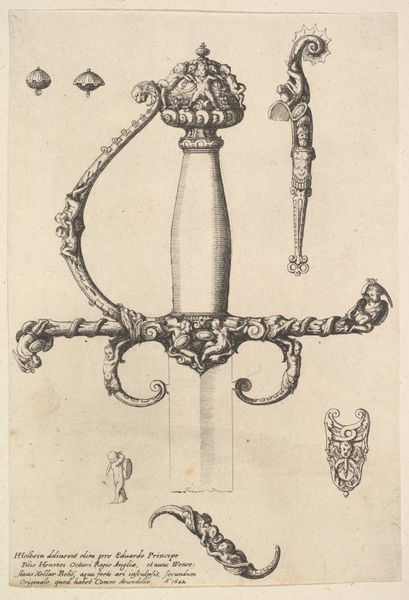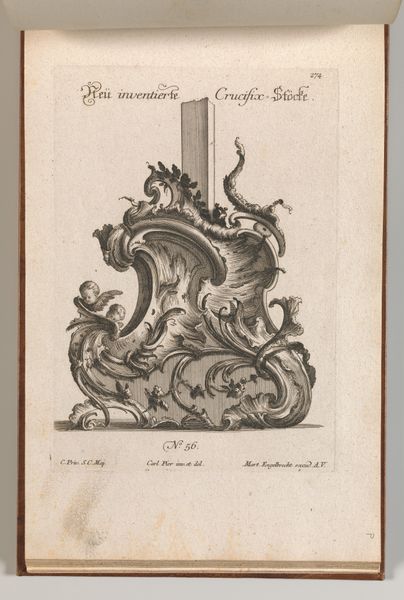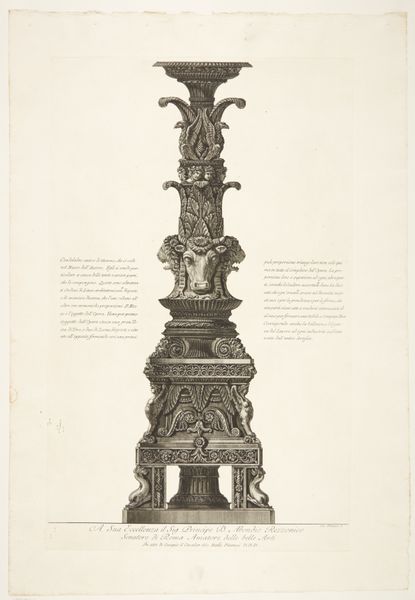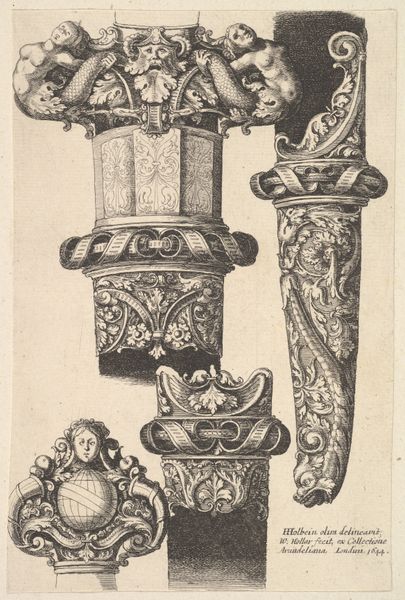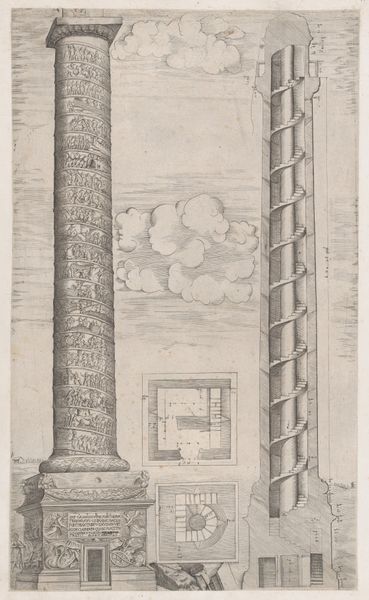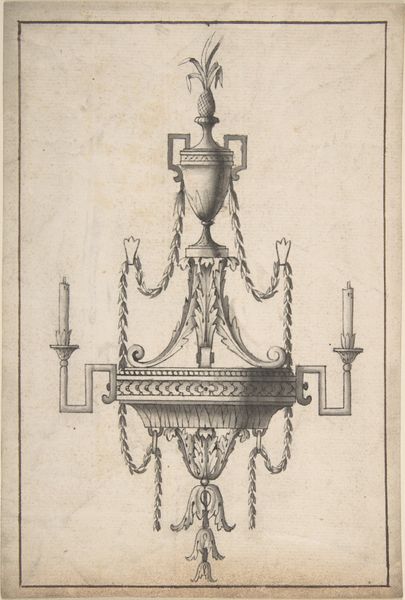
drawing, print, engraving, architecture
#
drawing
# print
#
ancient-mediterranean
#
column
#
engraving
#
architecture
Dimensions: sheet: 18 3/16 x 12 3/16 in. (46.2 x 31 cm)
Copyright: Public Domain
Editor: Here we have "Column of Dilius and Obelisque Fountain," an engraving from 1574 currently residing at the Metropolitan Museum of Art. It's by an anonymous artist and the intricate details captured in a print just have a really formal and almost political feel. What strikes you about it? Curator: What I see is a carefully constructed assertion of power through civic symbolism. Look at how the artist juxtaposes the martial column dedicated to Dilius, topped with a statue and adorned with warship imagery, with the obelisk fountain, a source of life-giving water and classical revival. It prompts me to wonder: How would such an image function within its social and political context? Editor: So, it’s like they’re visually arguing something through the placement of these monuments? Is it meant to be read in a specific order? Curator: Precisely. The arrangement subtly promotes a certain ideology. Notice how the text beneath the column glorifies military achievements while the fountain alludes to peace and prosperity through classicism. How might this contrast influence public perception of the ruling powers who commissioned such imagery? Editor: That's fascinating. I hadn't considered the active role prints play in shaping opinions. It sounds like understanding the history behind an image is essential for a modern audience. Curator: Indeed. The artist consciously chose these forms to evoke particular responses. They wanted viewers to associate the present-day city, presumably Rome, with the triumphs of its classical past. What is striking here is the deliberate use of historical association for political persuasion. Editor: I will definitely look at prints and drawings differently from now on, and not only notice their aesthetic features, but how they participated in society and politics. Thanks for showing that there's always so much to learn from artworks. Curator: A print like this is a window into the past, if you know where to look. Glad I could help show you the view.
Comments
No comments
Be the first to comment and join the conversation on the ultimate creative platform.
